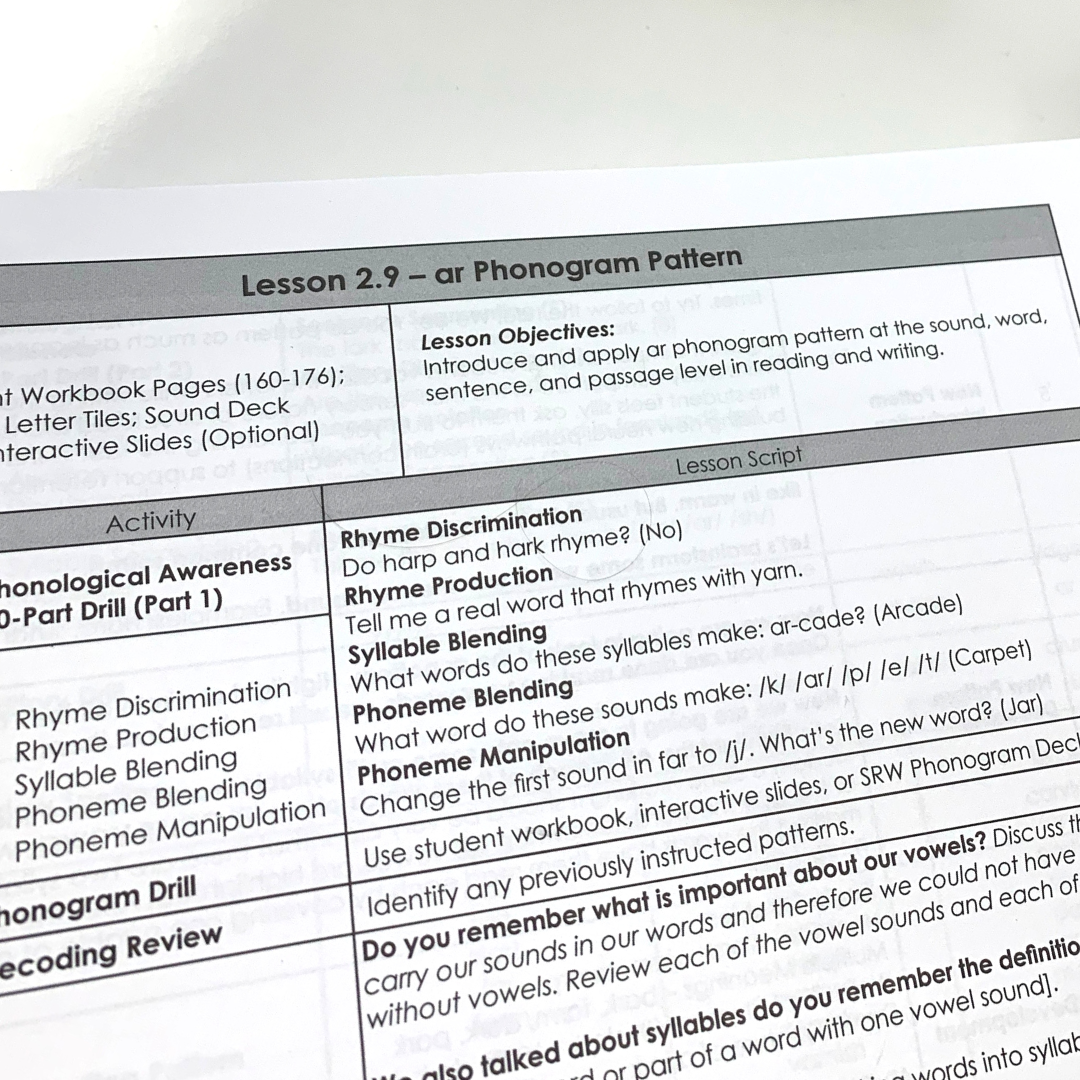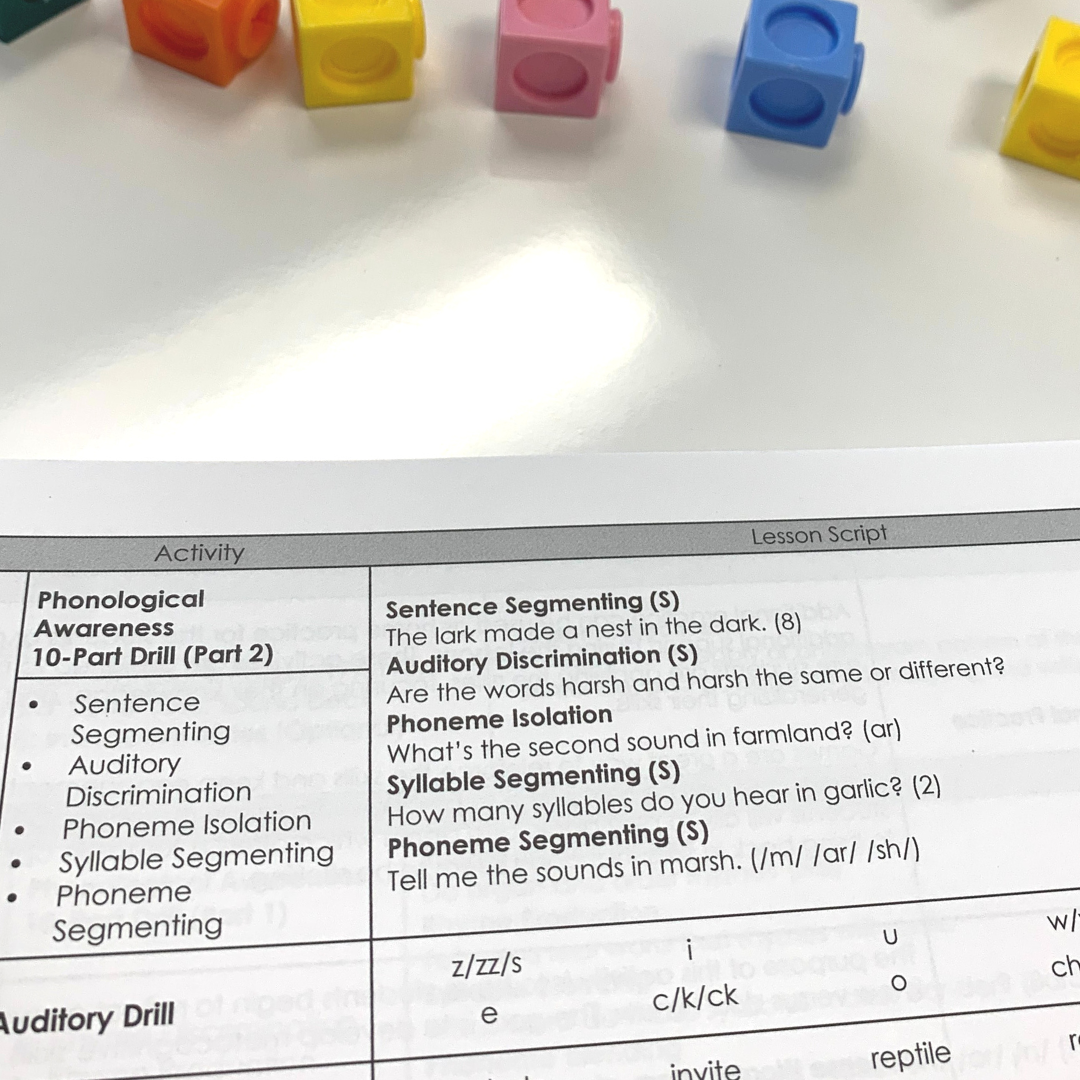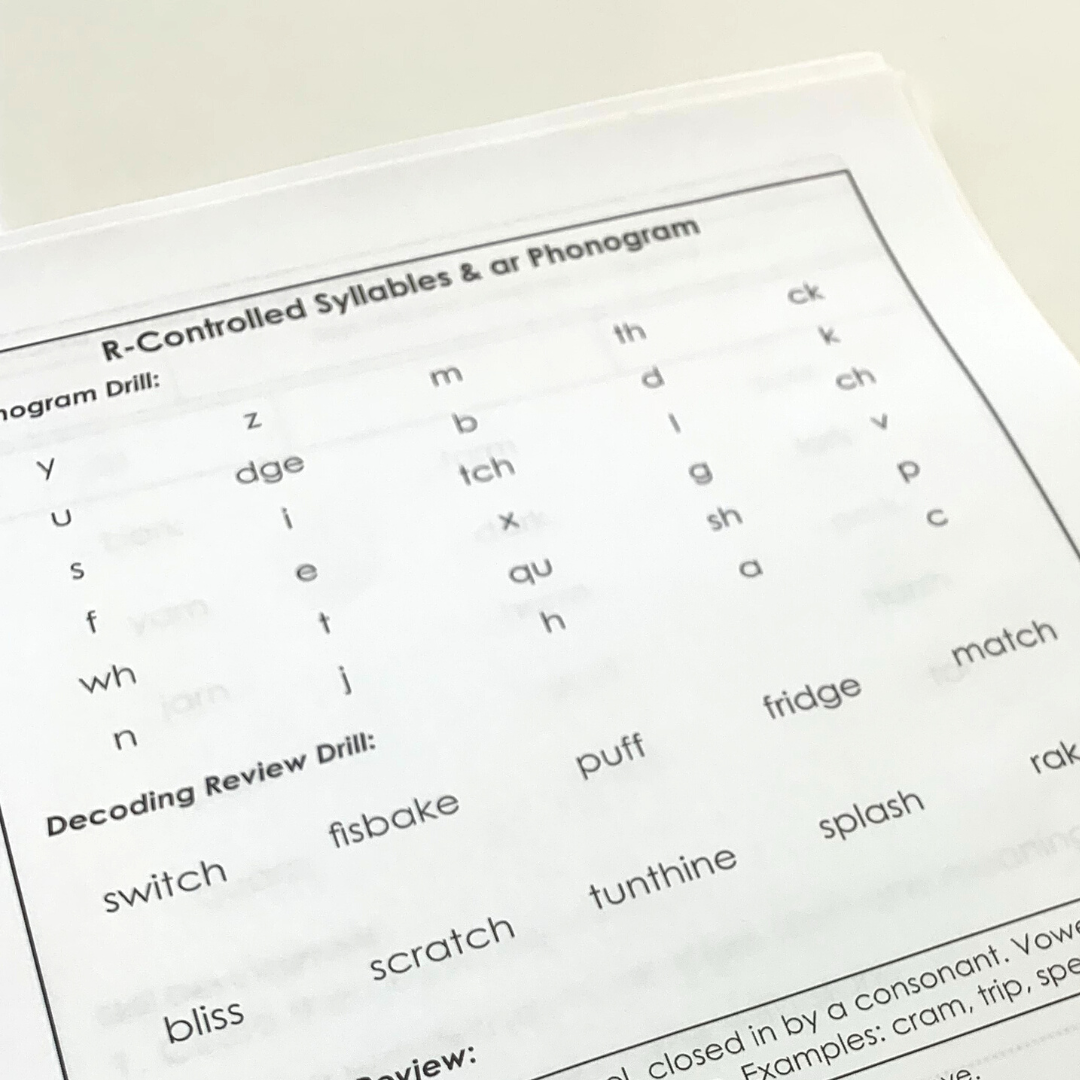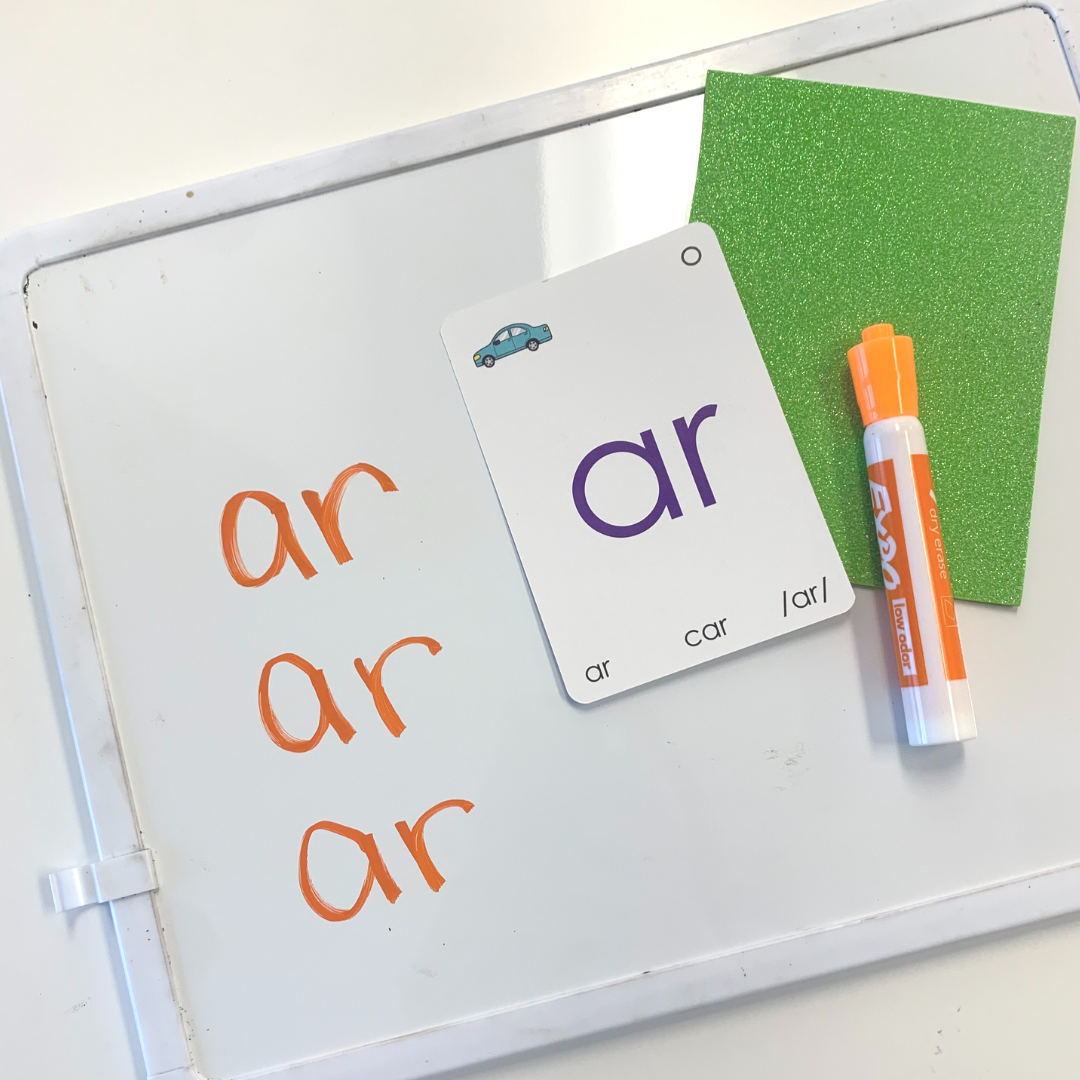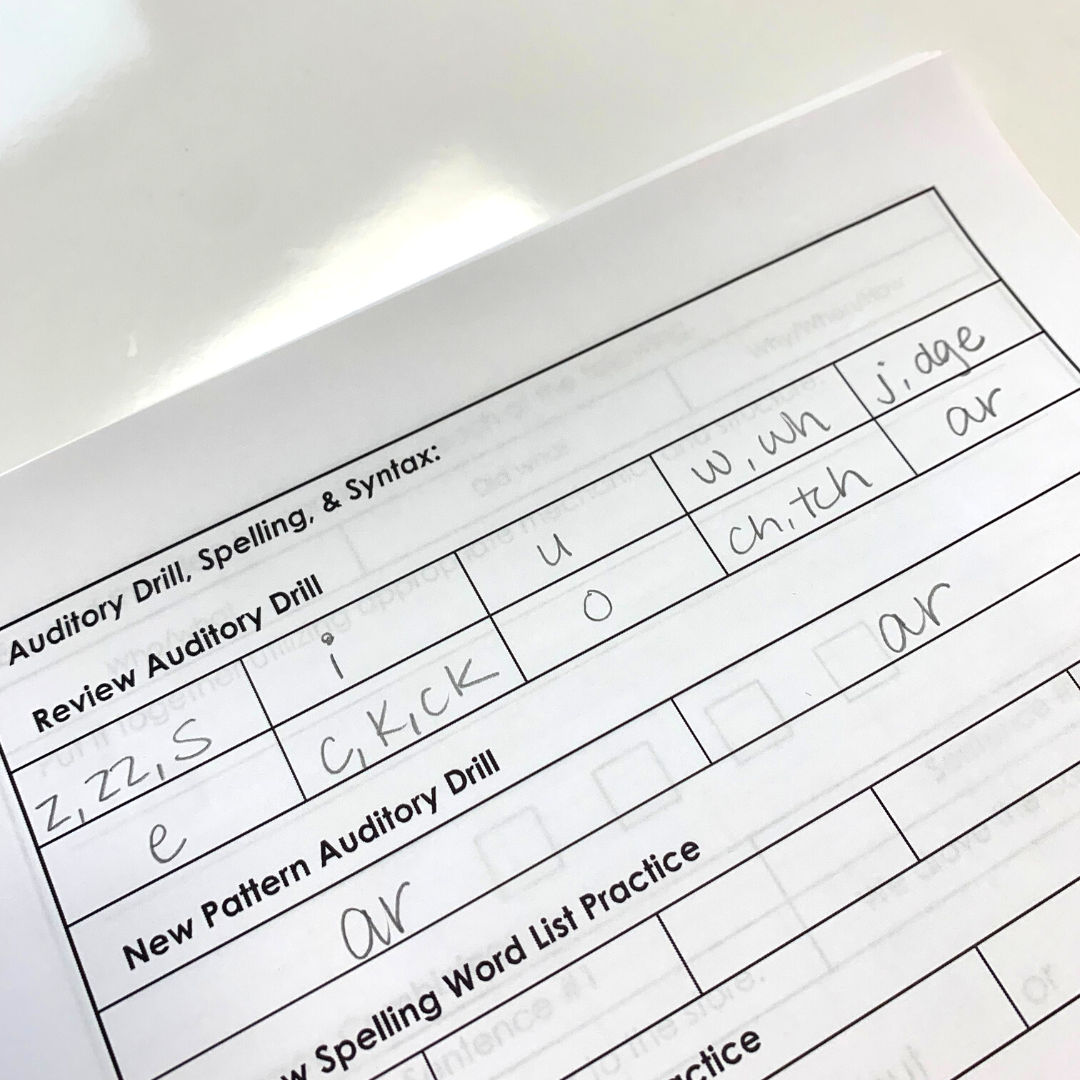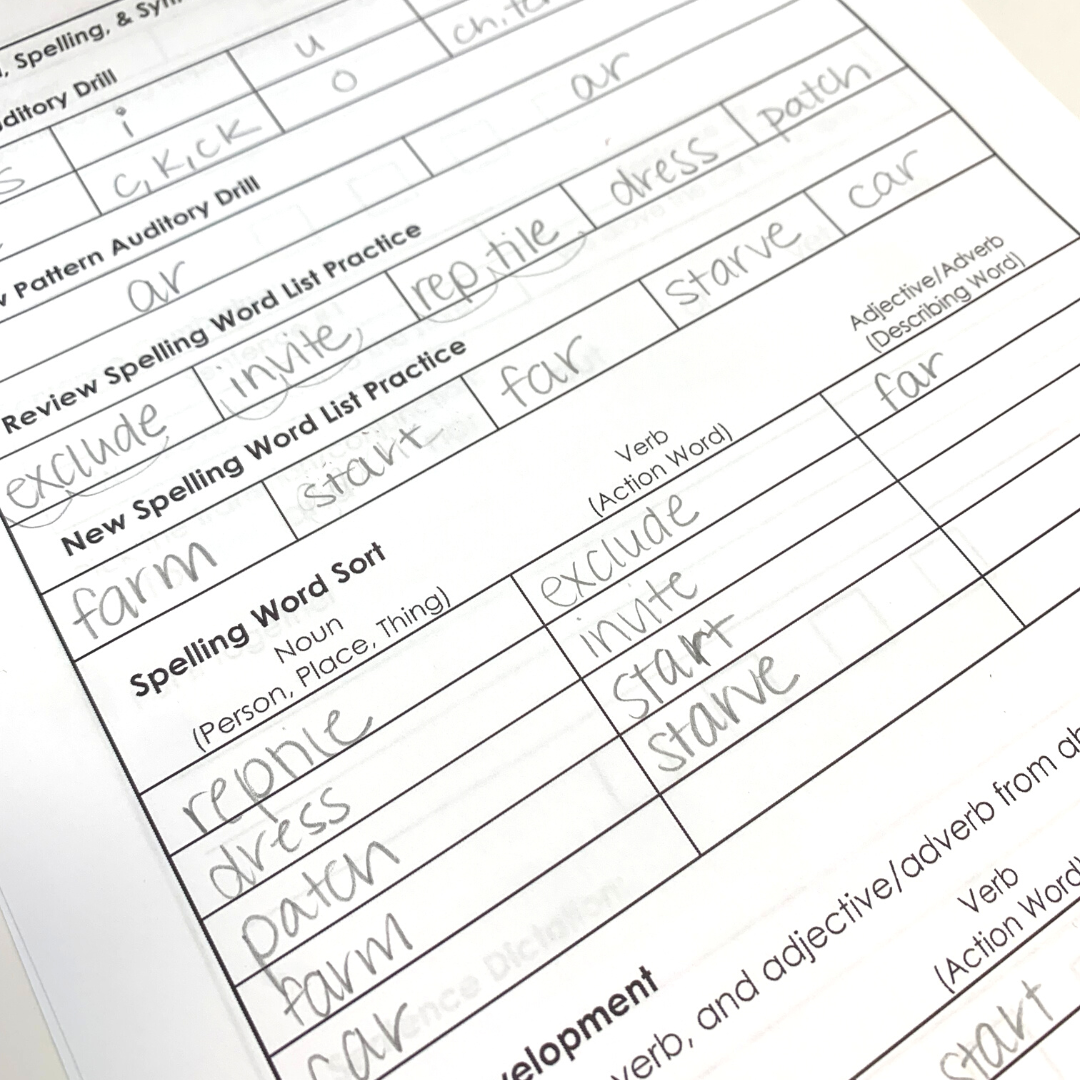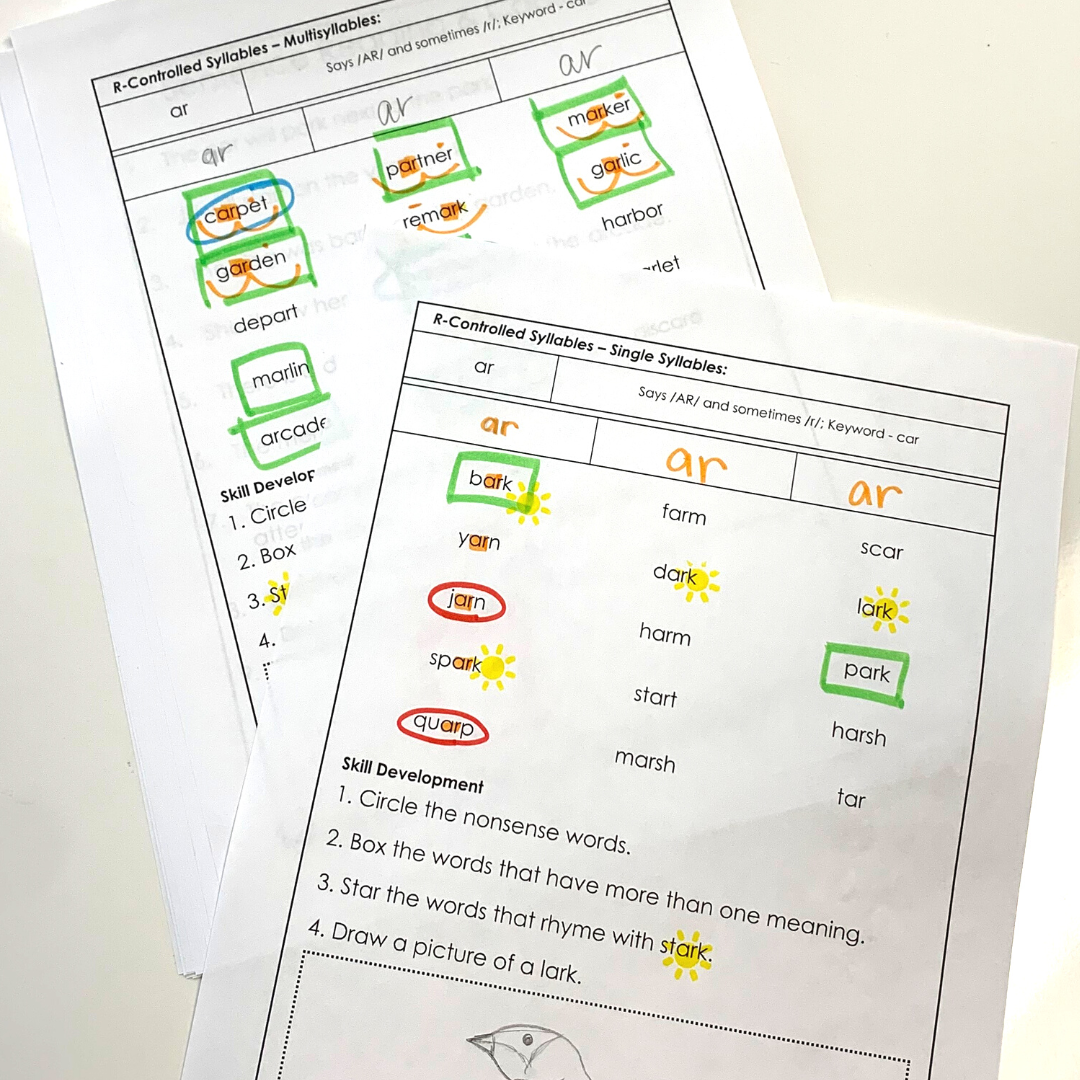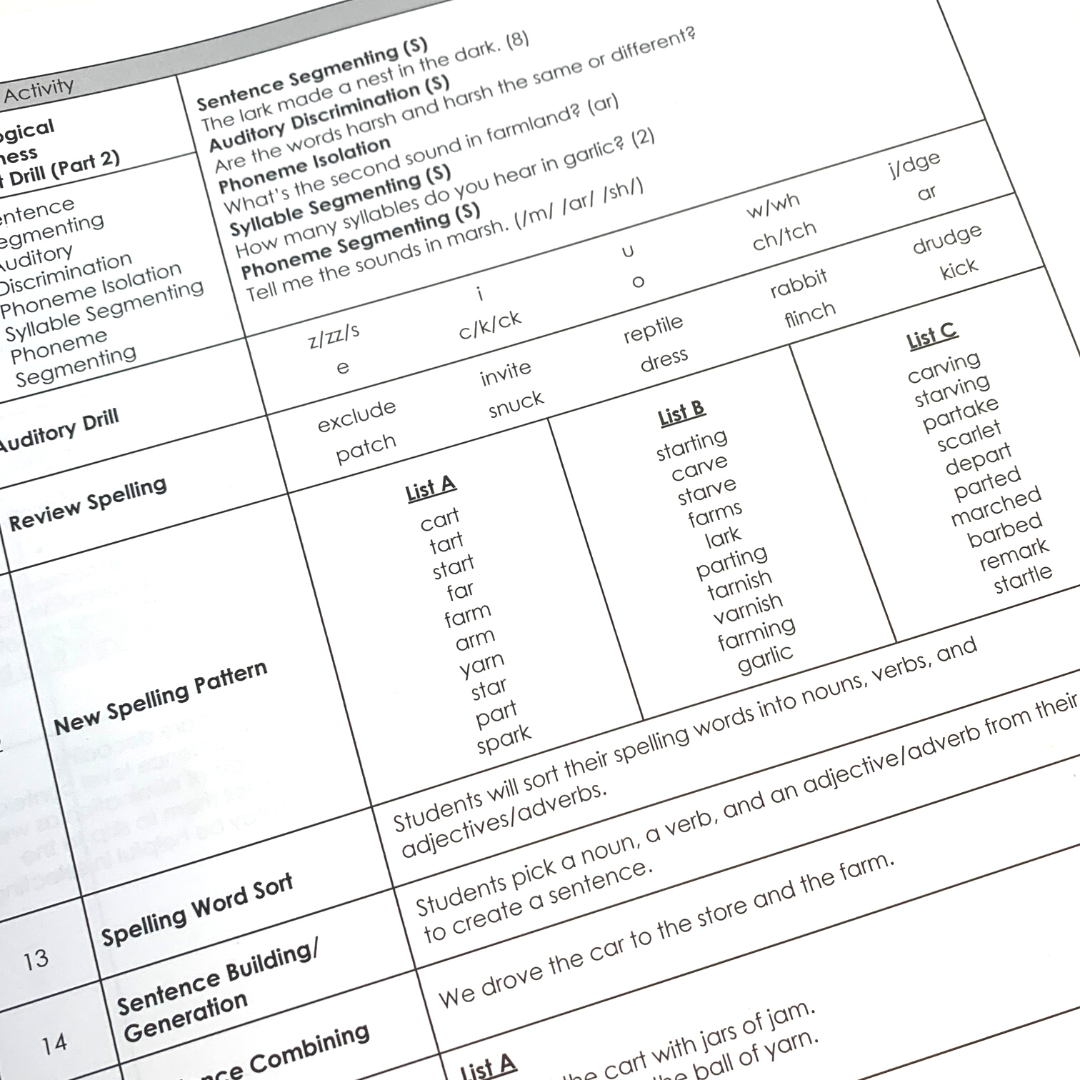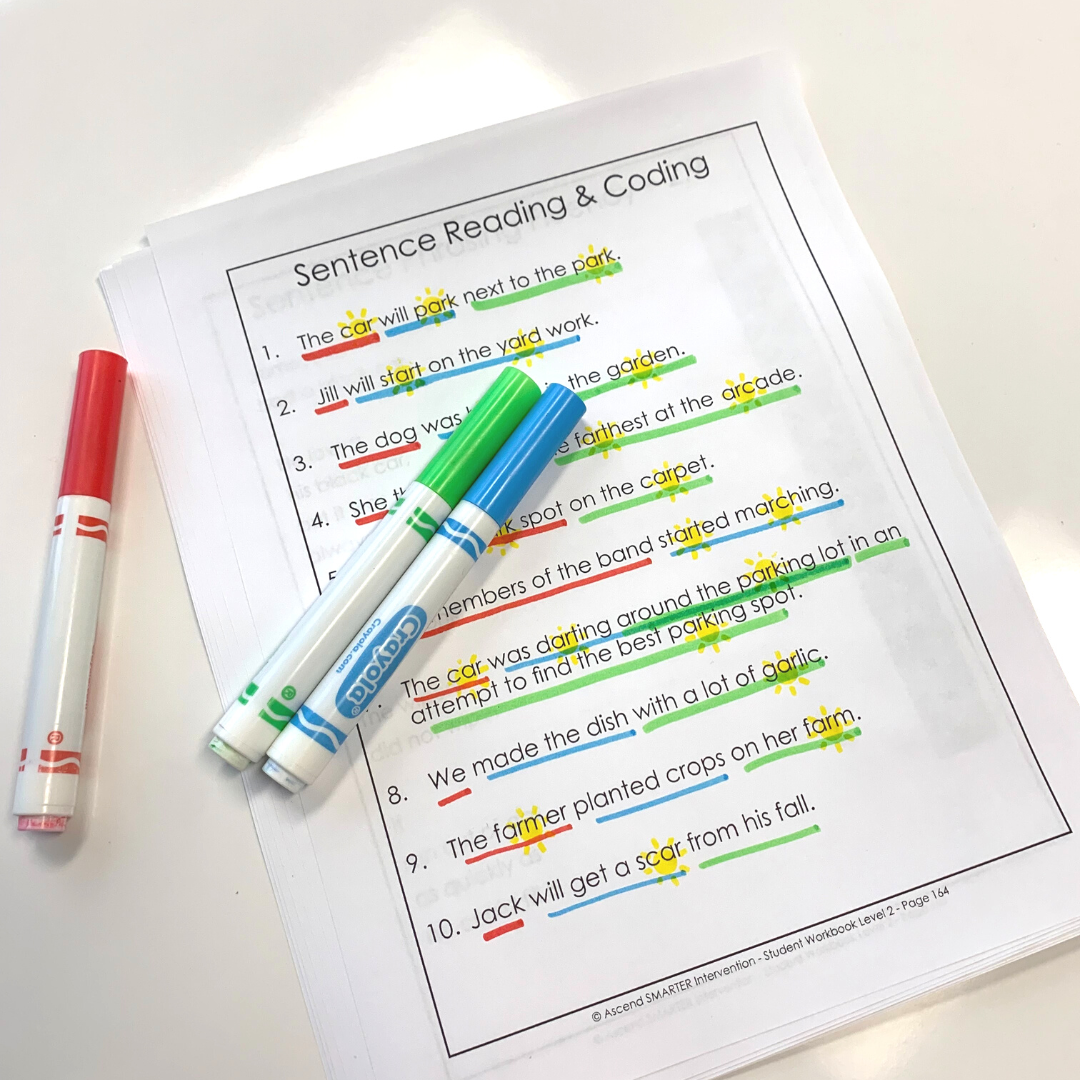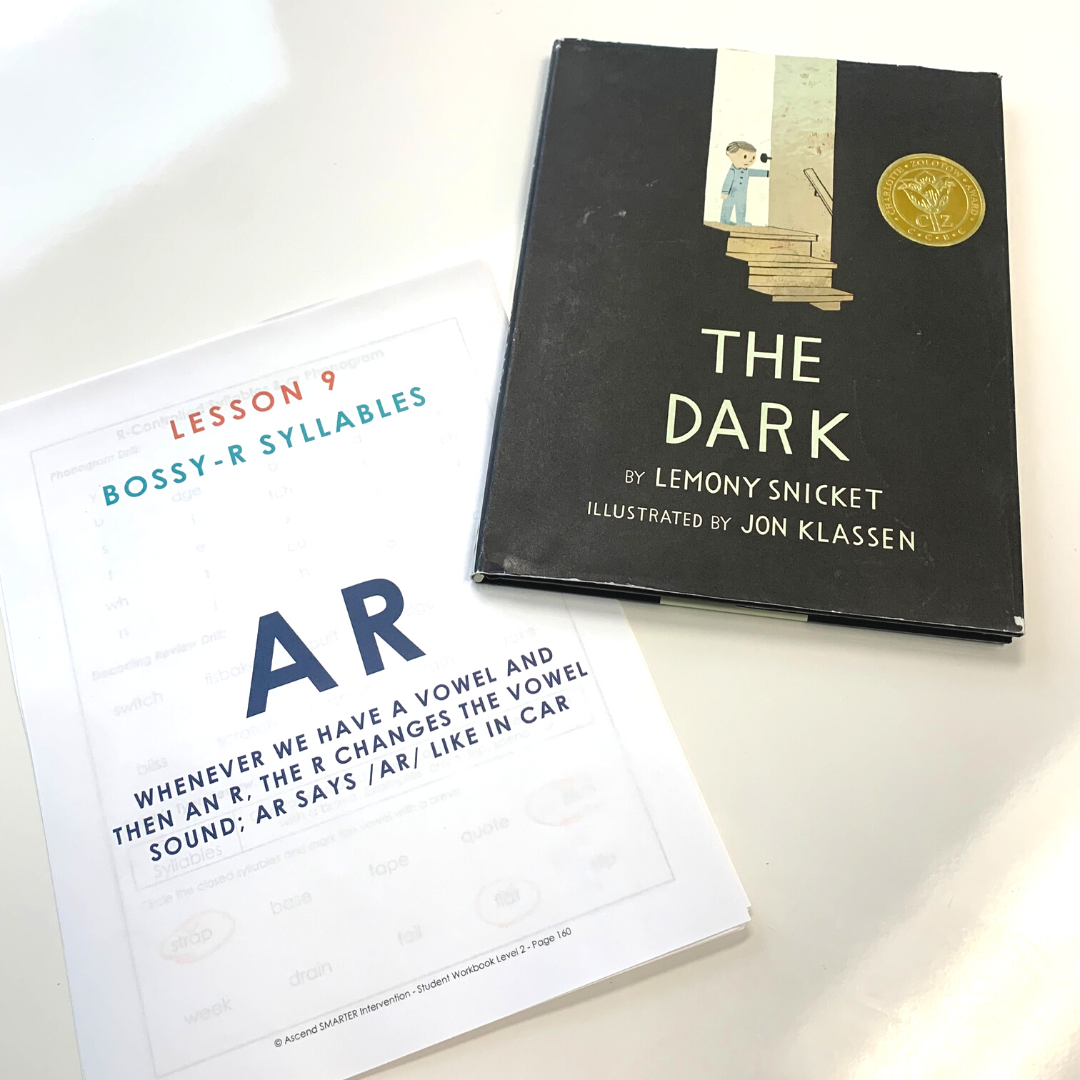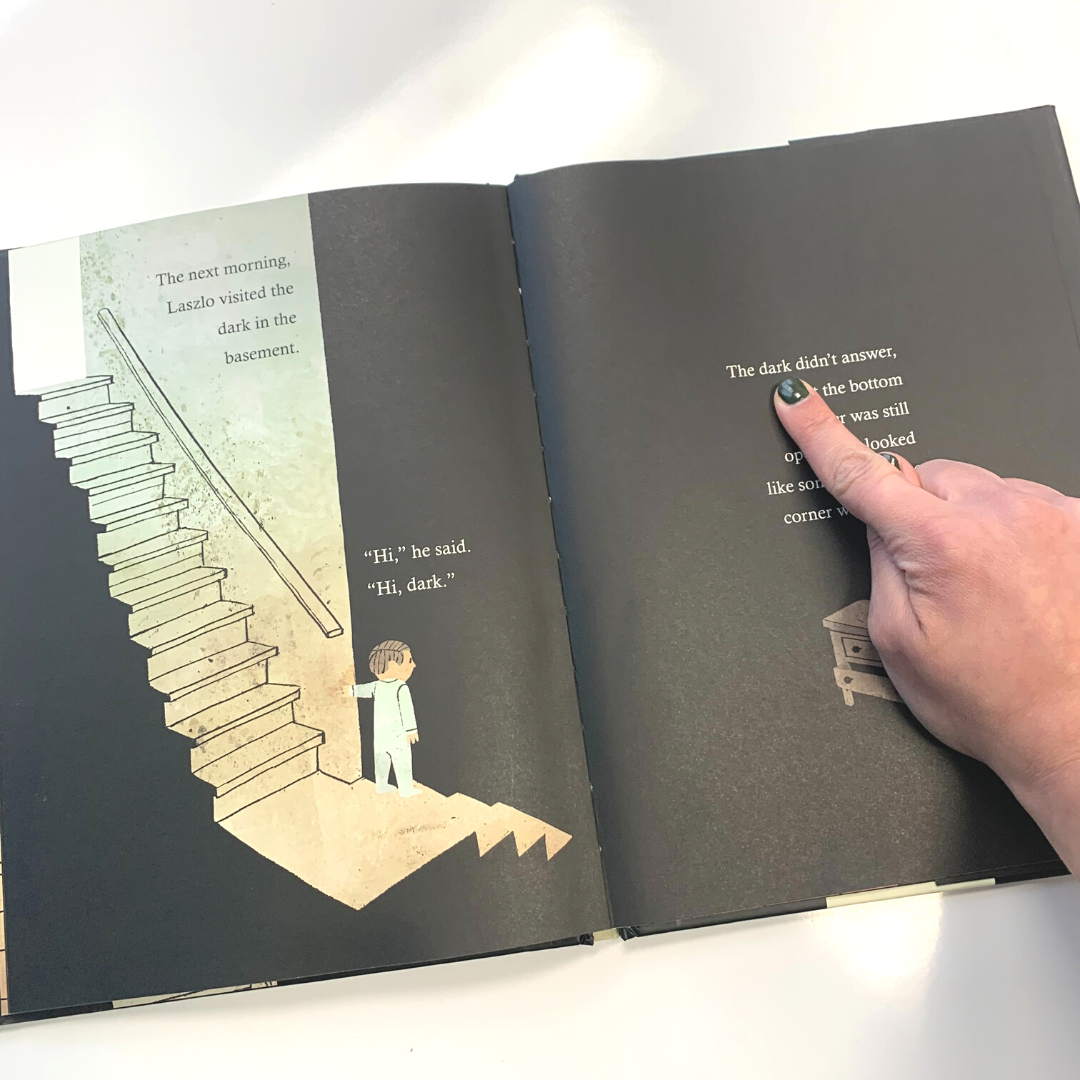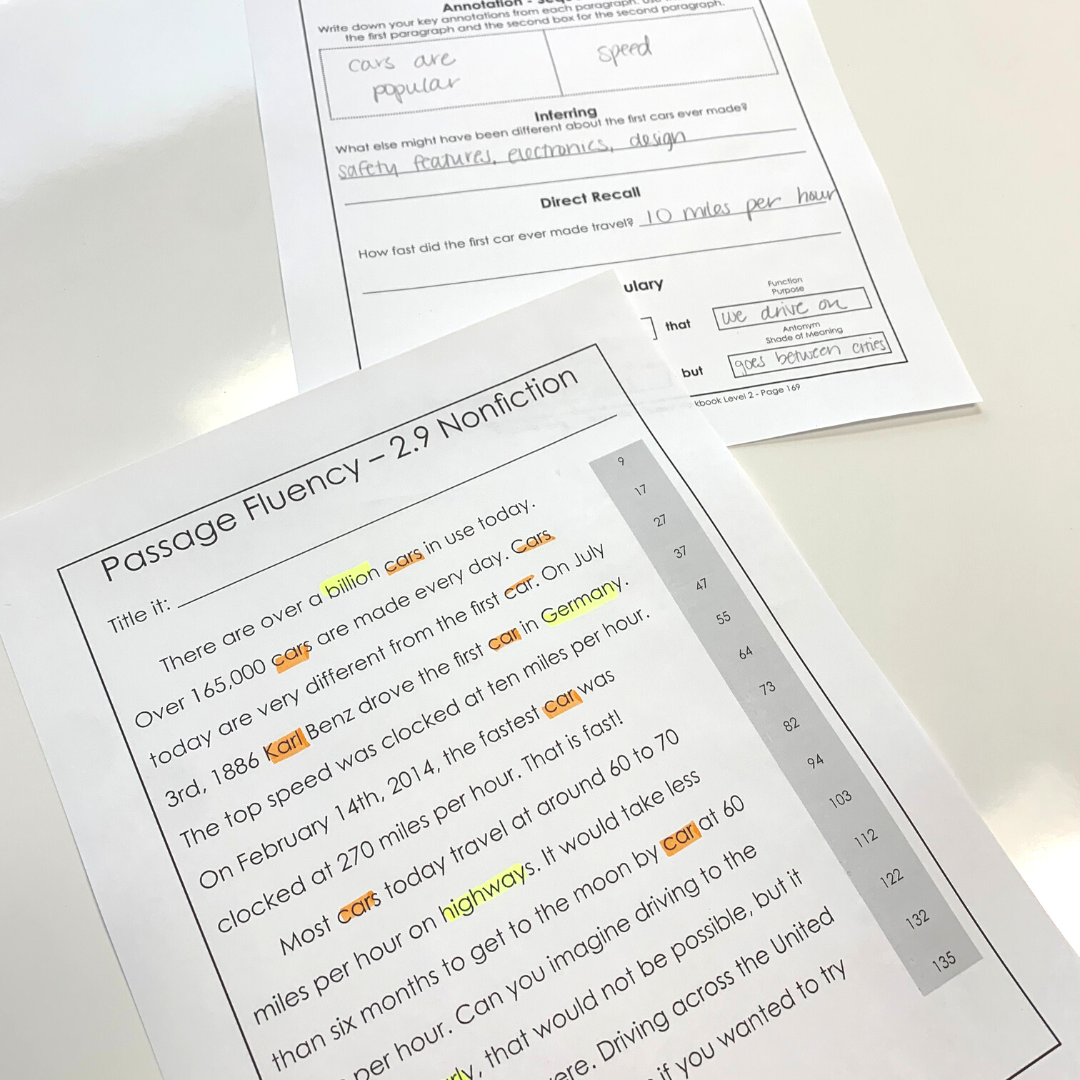How to Create Cohesive Literacy Lesson Plans
PA and phonics and vocab and fluency and comprehension...oh my!
If you've ever struggled to find a way to teach ALL of the reading & writing skills within one cohesive lesson…
you're definitely not alone.
We spent years pulling resources from different programs and trying to piecemeal things together. Talk about a headache! It always felt like no matter how hard we tried, no matter how many different resources we collected, it wasn’t getting easier to target everything in our lessons.
That is until we finally figured out the secret to creating cohesive lesson plans.
Now - we want to share that secret with you!
First things first - when building lesson plans, there are a few key literacy components that we need to target to support all of the cognitive processes used to read and write. These include phonology, orthography, and semantics. You can read more about these here.
Lesson Outline
In order to fully support these cognitive processes, we need to target phonological awareness, phonics, vocabulary, fluency, and comprehension (for both reading and writing).
Then, to scaffold our instruction, we want to take students from the sound level, to the word level, and then up through sentences, paragraphs, and passages.
For each lesson, we use a phonics through-line to help keep all of these different activities and levels feeling cohesive. We usually work through the entire stairstep progression for reading (starting with sounds and working up through passages) and then go back to sounds and repeat the process for writing.
Let’s walk through a lesson together…
We're going to use the AR phonogram to show what this looks like but you could apply these same ideas to any letter, phonogram, or morpheme.
Let’s start with a warm-up
Before we read or write anything, we'll complete a quick phonological awareness warm-up.
We split our PA drill into two parts. The first is a 5-part reading-based PA drill that targets rhyming, blending, and phoneme manipulation. These skills help prime students’ brains for reading. Before we work on writing we also complete a 5-part PA drill that targets segmenting, auditory discrimination, and sound isolation.
The key here is to use the target phonogram in your PA prompts to help students begin hearing, recognizing, and using it in their words. This helps PA feel cohesive and not like just another to-do list item we need to check off.
Check out our PA drill for our AR lesson below.
Starting at the Sound Level
For reading at the sound level, we are going to complete a sound drill (click here to learn more about that) and then introduce the new pattern.
We explicitly teach students what each of the phonograms say. This is important because our language is made up of phonemes that require more phonics knowledge than just knowing the alphabet.
Think about it - if students stopped learning phonograms after they learned the alphabet, then they would only know the letter T to say /t/. But - T, when paired with other letters like in th, tch, or tion, doesn't say /t/. It works with the other letters to say /th/, /ch/, or /shun/.
So, when working on AR, we will explicitly teach students that AR says /ar/ like in car. Occasionally, it will also say /r/ like in dollar.
For the writing portion of our lesson, we will complete an auditory drill (click here to read more about this). It is important we do both the sound drill (for reading) and the auditory drill (for writing) because they help build and strengthen the connection between phonology and orthography for students. The sound drill starts with orthography (visuals) and moves towards phonology (sounds), whereas the auditory drill starts with the sound and asks students to provide the visual piece.
Working at the Word Level
After working at the sound level, we have students apply the target phonogram at the word level.
Here, we are working on both phonics and vocabulary.
To support phonics development, we have students read and spell at the word level.
To support vocabulary development, we'll also work on defining words, recognizing multiple-meaning words, identifying parts of speech, identifying and reading nonsense words, using words in context, and so on. You can learn more about how to incorporate vocabulary instruction into your lessons here.
Moving Up to the Sentence Level
From there, we'll have students move into the sentence level.
During the reading half of the lesson, we'll have students identify the target phonogram within a sentence. Then, they'll break the sentence into a who/what (subject), did what (predicate), and why/when/where/how (adverbial phrase/clause). This is going to support their fluency (as it helps students read in a way that sounds like spoken language) and their comprehension (since these are going to be the key details they need to recognize in longer texts). You can read more about these sentence-reading tasks here.
For writing, students are working to apply their target phonogram in sentences. We'll have them write sentences using AR words, making sure to include who/what, did what, and why/when/where/how details. We also have them combine sentences and practice writing sentences we've dictated to them.
Reaching the Paragraph & Passage Levels
The paragraph and passage levels look a bit different depending on the students. If students cannot yet read or write at this level independently, there are ways to scaffold instruction so they can still complete activities here. These include reading passages to the student, having them highlight unfamiliar words (that you’ll then provide for them but they read the rest of the passage), voice typing their paragraph, etc.
Regardless of how these activities are completed, at these levels, we are asking students to find/apply their target phonogram, understand text structure (is this a narrative, informative, opinion, or persuasive prompt/text?), and target comprehension.
For more information about how we set up our comprehension instruction, click here.
For more information about paragraph-level writing, click here.
This is also a great place to pull in authentic literature. For our AR lesson, we like the book The Dark by Lemony Snicket (but you can use whatever book you want or have on hand). We'll read it with students and ask them to identify the target phonogram. This encourages generalization and helps them see that the skills we are working on matter outside of our lessons.
In short -
So again, in every lesson we complete, we are working students from the sound level, to the word level, to the sentence level, and then up to the paragraph and passage level for reading (targeting all 5 core components of literacy as we work through this progression). Then, we work through the same progression for writing. We use phonics as a throughline to help everything flow and feel cohesive.
Now, we know this sounds like a lot. It is a lot! We break this up across multiple sessions depending on how much time we have with our students. That might be two, hour-long sessions, five 30-minute sessions, or another configuration.
We always tell our students and families, we'll go as fast as we can and as slow as we need to.
If you are looking for a program that has this already built out for you (so that you don't need to pull activities at each level & for each component and then try to align them all together yourself), our Delivering SMARTER Intervention program includes 200+ done-for-you lessons. You can learn more about the program >>here.<<
Not sure if DSI is a fit for you? We’d love to jump on a call and chat more about your students/setting, the program, and whether or not it would be a fit!


